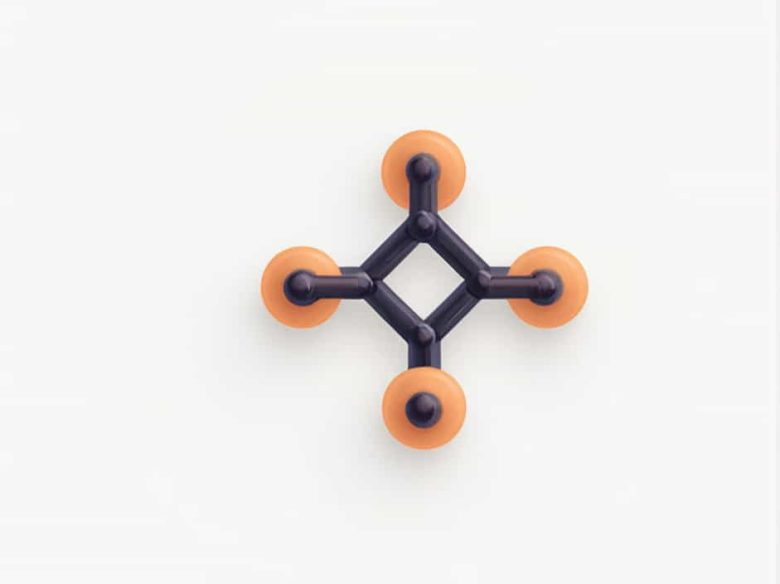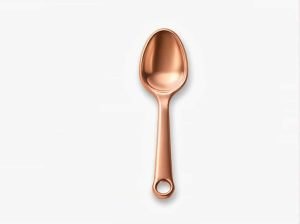Cupric carbonate is a chemical compound of copper carbon and oxygen. It is often used in industrial applications pigments and as a precursor for other copper-based compounds. The molecular formula of cupric carbonate provides essential information about its composition and chemical behavior.
In this topic we will explore the molecular formula structure properties synthesis and applications of cupric carbonate in different industries.
What Is the Molecular Formula of Cupric Carbonate?
The molecular formula of cupric carbonate is:
CuCO₃
This formula indicates that each molecule contains one copper (Cu) atom one carbon (C) atom and three oxygen (O) atoms.
However pure cupric carbonate (CuCO₃) is rarely found in nature. Instead it exists as basic copper carbonates which include:
- Malachite → Cu₂(OH)₂CO₃
- Azurite → Cu₃(OH)₂(CO₃)₂
These compounds contain additional hydroxide (OH⁻) groups making them more stable in atmospheric conditions.
Chemical Structure of Cupric Carbonate
Cupric carbonate is an ionic compound where:
- The copper ion (Cu²⁺) forms a bond with the carbonate ion (CO₃²⁻).
- The carbonate group (CO₃²⁻) has a trigonal planar structure with a central carbon atom bonded to three oxygen atoms.
The basic copper carbonates (malachite and azurite) have more complex crystal structures due to the presence of hydroxide ions.
Physical and Chemical Properties of Cupric Carbonate
Physical Properties
| Property | Description |
|---|---|
| Molecular Formula | CuCO₃ |
| Molar Mass | 123.55 g/mol |
| Appearance | Greenish powder or solid |
| Solubility | Insoluble in water dissolves in acids |
| Density | 4.0 g/cm³ (approx.) |
| Melting Point | Decomposes before melting |
Cupric carbonate appears as a greenish powder which is why it is used in pigments and ceramics.
Chemical Properties
-
Decomposition Upon Heating
- When heated cupric carbonate decomposes into copper(II) oxide (CuO) and carbon dioxide (CO₂).
- Reaction:
CuCO₃ → CuO + CO₂
-
Reaction with Acids
- Cupric carbonate reacts with hydrochloric acid (HCl) or sulfuric acid (H₂SO₄) to form copper salts and release carbon dioxide gas.
- Example:
CuCO₃ + 2HCl → CuCl₂ + CO₂ + H₂O
-
Reaction with Ammonia
- Cupric carbonate dissolves in ammonia solution to form a deep blue tetraamminecopper(II) complex.
- Reaction:
CuCO₃ + NH₃ + H₂O → [Cu(NH₃)₄]²⁺ + CO₃²⁻
Synthesis of Cupric Carbonate
Laboratory Preparation
Cupric carbonate can be synthesized using copper sulfate (CuSO₄) and sodium carbonate (Na₂CO₃) in an aqueous solution.
Reaction:
CuSO₄ + Na₂CO₃ → CuCO₃ + Na₂SO₄
This process forms a precipitate of cupric carbonate which can be filtered and dried for further use.
Industrial Production
Industrially cupric carbonate is produced by reacting copper salts with carbonate ions. It is often manufactured in bulk for ceramic glazes pigments and agricultural applications.
Uses of Cupric Carbonate
1. Pigments and Paints
Cupric carbonate is widely used as a green pigment in paints ceramics and glass production. It provides a vibrant green color due to its unique light absorption properties.
2. Agricultural Applications
- Used as a fungicide and pesticide in farming.
- Helps prevent fungal infections in plants and improves soil quality.
3. Chemical Industry
- Acts as a precursor for copper-based chemicals like copper chloride (CuCl₂) and copper oxide (CuO).
- Used in catalysis and chemical reactions requiring copper compounds.
4. Electroplating and Metallurgy
- In electroplating cupric carbonate can be used to deposit thin layers of copper onto metal surfaces.
- It helps improve corrosion resistance and electrical conductivity in industrial applications.
5. Glass and Ceramic Manufacturing
- Cupric carbonate is added to glass and ceramic glazes to achieve green and blue shades.
- Enhances durability and aesthetic appeal of pottery and tiles.
Natural Occurrence of Cupric Carbonate
Although pure CuCO₃ is rare basic copper carbonates such as malachite (Cu₂(OH)₂CO₃) and azurite (Cu₃(OH)₂(CO₃)₂) occur naturally.
- Malachite: Found in green mineral formations often used in jewelry and decorative items.
- Azurite: A deep blue mineral that forms in copper-rich environments.
Both minerals are commonly mined for copper extraction and industrial use.
Toxicity and Safety Considerations
- Cupric carbonate is toxic if ingested and should be handled with care.
- Inhalation of dust can cause respiratory irritation.
- Prolonged exposure can lead to copper poisoning causing nausea vomiting and liver damage.
- Always wear protective gloves masks and eyewear when handling the compound.
Cupric carbonate (CuCO₃) is a chemically significant compound with widespread applications in pigments agriculture chemistry and metallurgy. Although pure cupric carbonate is rare its basic forms such as malachite and azurite are commonly found in nature.
Understanding its molecular formula properties reactions and uses is essential for industrial and scientific applications. Whether in paints fertilizers or glass manufacturing cupric carbonate remains an important copper-based chemical in various industries.



